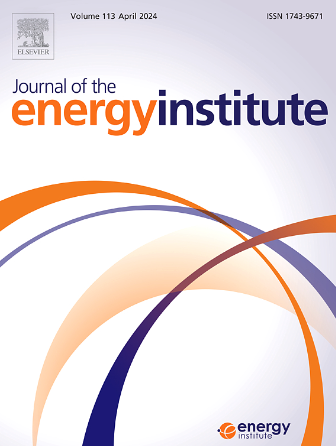基于SHAP可解释性分析的火电机组NOx浓度预测:基于多模态数据的深度学习模型VSAttLSTM
IF 5.6
2区 工程技术
Q2 ENERGY & FUELS
引用次数: 0
摘要
准确预测NOx浓度对火电厂污染物排放和安全运行具有重要意义。然而,单一的数据驱动模型无法描述研究对象的全局属性,从而影响了泛化性能,并引入了不确定性。为了解决这一问题,本文提出了一种深度学习预测模型VSAttLSTM,该模型集成了信号分解算法和超参数自适应优化算法。该模型将长短期记忆(LSTM)网络与自注意机制相结合,并引入SSA (Sparrow Search Algorithm)进行超参数优化,提高了模型的预测性能和稳定性。本研究还采用SHAP (Shapley Additive explained)方法对基准深度学习模型进行可解释性分析,揭示了各种特征对NOx浓度预测结果的影响程度。采用变分模态分解(VMD)算法对NOx污染物数据进行信号分解,实现多任务建模。对比实验和烧蚀实验结果表明,VSAttLSTM模型显著提高了预测精度,使原始数据的相对预测误差控制在5%以内,在多个性能指标上优于对比模型。这为行业提供了一种更加透明和实用的方法来预测火电机组的氮氧化物污染物排放。本文章由计算机程序翻译,如有差异,请以英文原文为准。

NOx concentration prediction in thermal power units based on SHAP interpretability analysis: A deep learning model VSAttLSTM with multimodal data
Accurate prediction of NOx concentration is of significant importance for pollutant emissions and safe operation in thermal power plants. However, a single data-driven model cannot describe the global properties of the research object, which hinders generalization performance and introduces uncertainty. To address this issue, this paper proposes a deep learning prediction model, VSAttLSTM, which integrates a signal decomposition algorithm and a hyperparameter adaptive optimization algorithm. The model combines Long Short-Term Memory (LSTM) networks with a self-attention mechanism, and introduces the SSA (Sparrow Search Algorithm) for hyperparameter optimization to enhance the model's predictive performance and stability. This study also employs the SHAP (Shapley Additive Explanations) method to conduct interpretability analysis on the benchmark deep learning model, revealing the extent of influence of various features on the prediction results of NOx concentration. The variational mode decomposition (VMD) algorithm is applied to decompose the NOx pollutant data for signal decomposition, enabling multi-task modeling. The results of comparative experiments and ablation experiments demonstrate that the VSAttLSTM model significantly improves prediction accuracy, enabling the relative prediction error of the original data to be controlled within 5 %, and outperforms the comparative models on multiple performance metrics. This provides the industry with a more transparent and practical method for predicting NOx pollutant emissions from thermal power units.
求助全文
通过发布文献求助,成功后即可免费获取论文全文。
去求助
来源期刊

Journal of The Energy Institute
工程技术-能源与燃料
CiteScore
10.60
自引率
5.30%
发文量
166
审稿时长
16 days
期刊介绍:
The Journal of the Energy Institute provides peer reviewed coverage of original high quality research on energy, engineering and technology.The coverage is broad and the main areas of interest include:
Combustion engineering and associated technologies; process heating; power generation; engines and propulsion; emissions and environmental pollution control; clean coal technologies; carbon abatement technologies
Emissions and environmental pollution control; safety and hazards;
Clean coal technologies; carbon abatement technologies, including carbon capture and storage, CCS;
Petroleum engineering and fuel quality, including storage and transport
Alternative energy sources; biomass utilisation and biomass conversion technologies; energy from waste, incineration and recycling
Energy conversion, energy recovery and energy efficiency; space heating, fuel cells, heat pumps and cooling systems
Energy storage
The journal''s coverage reflects changes in energy technology that result from the transition to more efficient energy production and end use together with reduced carbon emission.
 求助内容:
求助内容: 应助结果提醒方式:
应助结果提醒方式:


